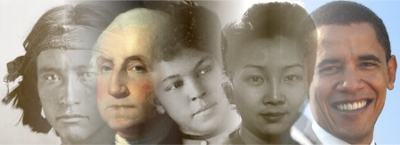Excerpt 2 from Examing the Evidence: Seven Strategies for Teaching with Primary Sources
Strategy 4: Examine Closely the Source Itself
Close Examination of Text
Of course the same skills can be applied to textual as well as visual primary sources.
To start students on a “case,” find a text primary source with some good and interesting
clues. For example, here is a piece of text:
Rose at five. The sun was shining brightly through my window, and I felt vexed with myself that he should have risen before me; I shall not let him have that advantage again very soon. How bright and beautiful are these May mornings! The air is so pure and balmy, the trees are in full blossom, and the little birds sing sweetly. I stand by the window listening to their music, but suddenly remember that I have an Arithmetic lesson which employes me until breakfast; then to school, recited my lessons and commenced my journal. After dinner practised a music lesson, did some sewing, and then took a pleasant walk by the water. I stood for some time admiring the waves as they rose and fell, sparkling in the sun, and could not help envying a party of boys who were enjoying themselves in a sailing boat. On my way home, I stopped at Mrs. Putman’s and commenced reading “Hard Times,” a new story by Dickens ... I anticipate to much pleasure in reading this story.—Saw some agreeable friends ... prepared tea, and spent the evening in writing. |
Read the piece of text with your students to get a sense of it. Then go through
the text, gathering clues and applying the strategies.
Strategy 1: The clues tell us that this piece of text is probably a journal or diary
entry. It could be a part of a letter, but there is no salutation and no inquiry into
another person’s well being. (i.e., “How are you and the family.”) One clue that it’s a
journal is that the writer mentions writing in a journal (“recited my lessons and commenced
my journal.”) Also, the style of chronologically recording the events and
impressions of the day is a clue that this is a diary or journal.
Strategy 2: The audience is the writer of the journal. The purpose is to record
the events and feelings of a day. There may be other purposes as well, including
self-expression.
Strategy 3: Since a diary is not usually written for other people to read, there are
only the writer’s deeply felt and culturally ingrained biases, not any deliberate
attempt to influence the reader.
Now, what other questions can be answered just from examining the text?
When: The clue “these May mornings” tells us the month. (Even without that
specific information we could determine that it was written close to the summer
solstice because the sun was up at 5 a.m.) The clue “’Hard Times,’ a new story by
Dickens” tells us the year. Hard Times was published in 1854, so this piece of text
was written in May 1854.
Who: We know that this person is probably a young person because he or she
is attending school. We know that this person is probably female because of the
clue “did some sewing.” In 1854, sewing was usually done by women and girls. We
know that this person is probably part of the middle or upper class because she is
attending school rather than working.
Where: There is not much information here about where the text was written.
The text tells us that the writer was near the water and that there were trees and
birds, which could describe a great many places.
So without any source information, the clues in the text tell us that this is a diary
entry written by a middle or upper class girl in May, 1854, who lived near water.
And in fact this is the Wednesday, May 24 entry from Charlotte Forten’s diary, written
while Charlotte was living in Salem, Massachusetts. It appears in an abridgement
of the diary published by Capstone Press and entitled Diary of Charlotte
Forten: A Free Black Girl Before the Civil War.
Of course, not all pieces of text will answer all these questions. Also, students
will usually have source material that will provide the answers to at least some of
those questions. But close examination of textual primary sources can be used to
help students determine what is said explicitly and what can be inferred as well as
to understand their own reactions to and impressions of a piece of text.
|

